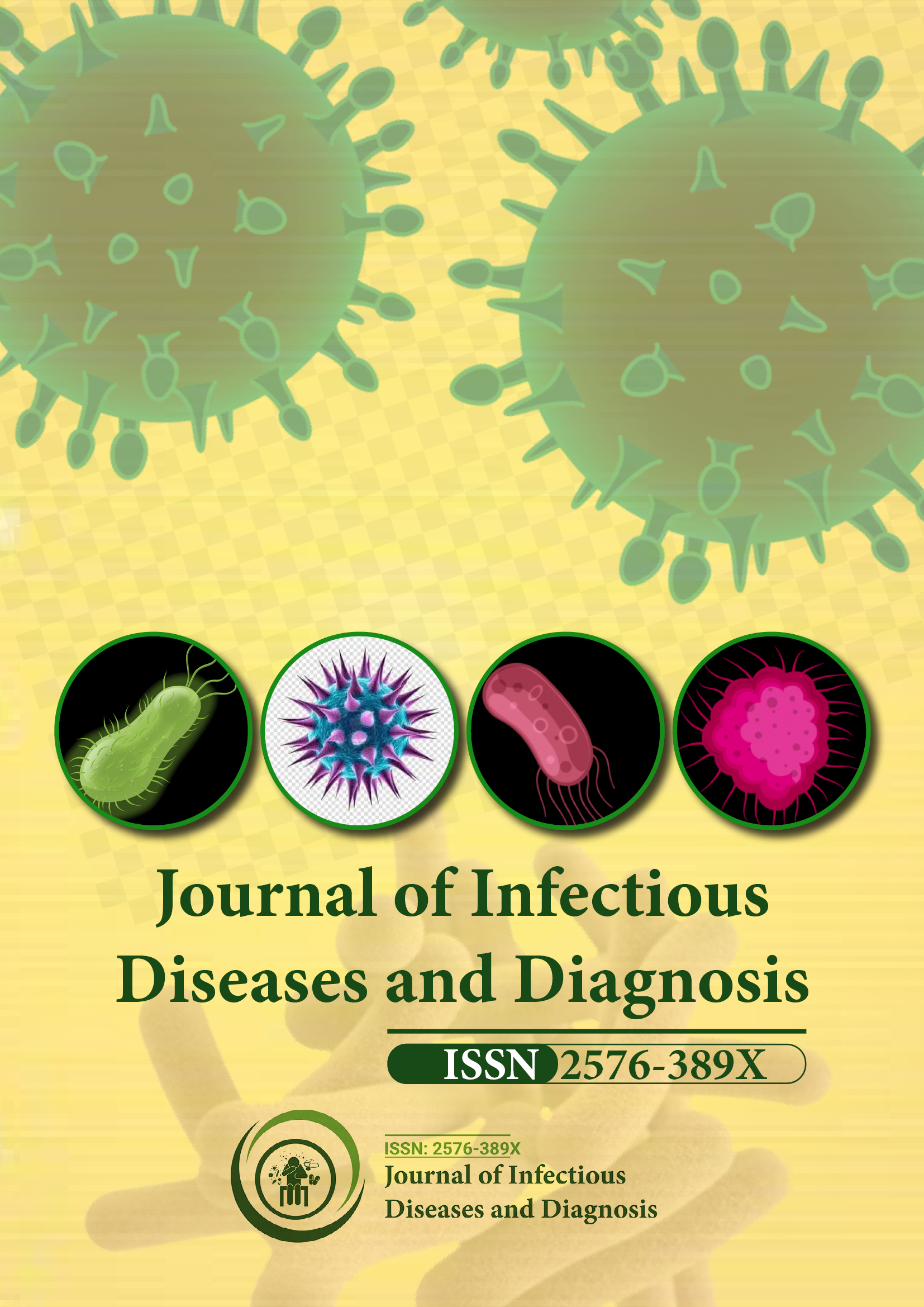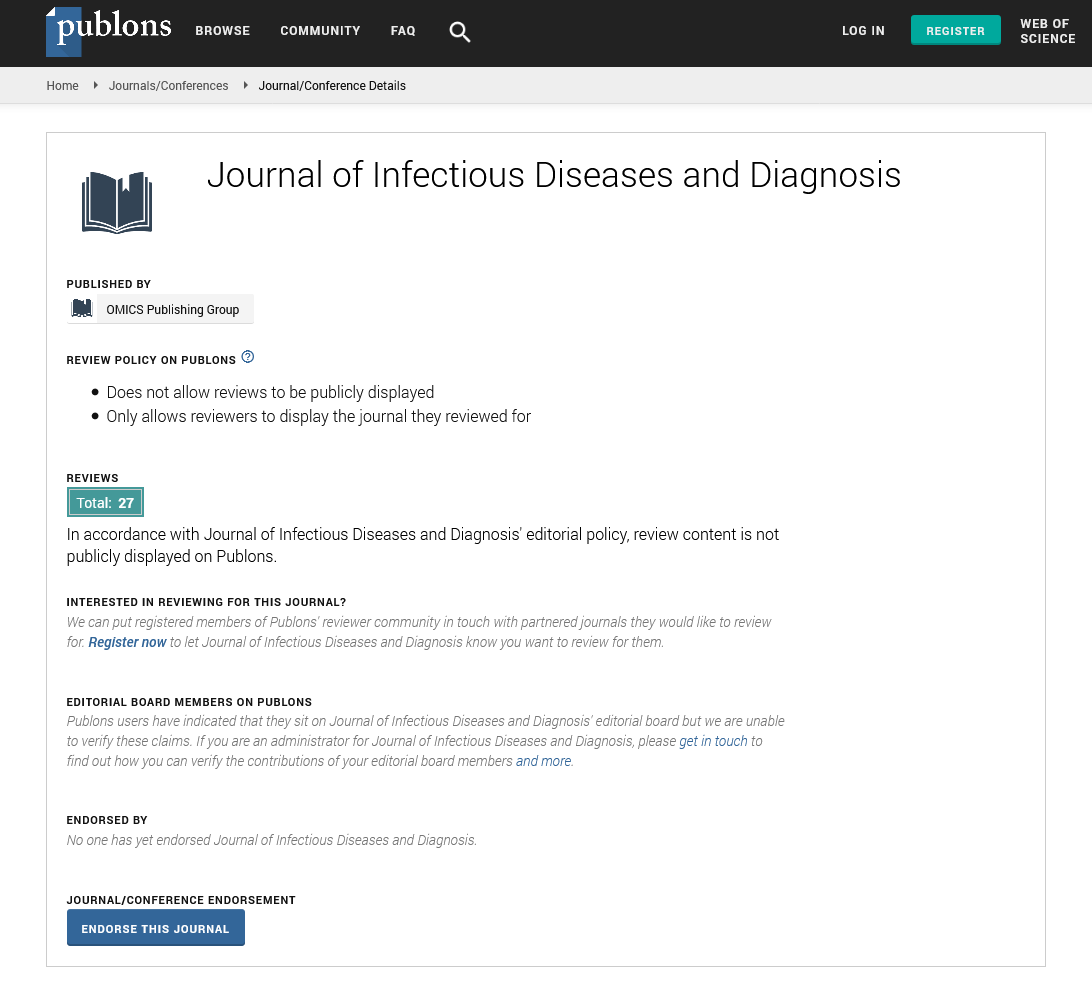Indexed In
- RefSeek
- Hamdard University
- EBSCO A-Z
- Publons
- Euro Pub
- Google Scholar
Useful Links
Share This Page
Journal Flyer

Open Access Journals
- Agri and Aquaculture
- Biochemistry
- Bioinformatics & Systems Biology
- Business & Management
- Chemistry
- Clinical Sciences
- Engineering
- Food & Nutrition
- General Science
- Genetics & Molecular Biology
- Immunology & Microbiology
- Medical Sciences
- Neuroscience & Psychology
- Nursing & Health Care
- Pharmaceutical Sciences
Perspective - (2023) Volume 8, Issue 4
Extracorporeal Membrane Oxygenation Therapy Increases Infection Risk in Burn Patients
Anniel Vaxmin*Received: 03-Jul-2023, Manuscript No. JIDD-23-22540; Editor assigned: 05-Jul-2023, Pre QC No. JIDD-23-22540 (PQ); Reviewed: 20-Jul-2023, QC No. JIDD-23-22540; Revised: 27-Jul-2023, Manuscript No. JIDD-23-22540 (R); Published: 03-Aug-2023, DOI: 10.35248/2576-389X.23.08.226
About the Study
The confluence of burn injuries and the utilization of Extracorporeal Membrane Oxygenation (ECMO) represent a critical juncture in the realm of intensive care. This study delves into the intricate landscape of infections that arise in patients with burn injuries undergoing ECMO support. By examining the challenges faced by these dual factors and exploring potential strategies to mitigate infectious complications, this discussion highlights the need for a multidisciplinary approach to optimize patient outcomes.
Burn injuries and ECMO: A dual challenge
The title effectively encapsulates the complexity of managing patients with burn injuries who require ECMO support. Burn injuries inflict profound physiological stress on the body, impairing immune defenses and creating a conducive environment for infections. The initiation of ECMO, while lifesaving, introduces additional complexities. The study delves into the unique challenges presented by burn injuries and ECMO, emphasizing the critical importance of a comprehensive understanding of both factors.
Risk factors and pathogenesis
The study delves into the risk factors that predispose patients with burn injuries on ECMO to infections. It discusses the impaired skin barrier, compromised immune response, and the potential for microbial colonization of burn wounds. The title prompts an exploration of the intricate pathogenesis of infections in this context, from local wound infections to systemic dissemination. This discussion underscores the interconnectedness of burn injuries and ECMO in driving infectious complications.
Infection surveillance and diagnosis
The title's emphasis on "infections" underscores the necessity of vigilant surveillance and accurate diagnosis. The study highlights the challenges of identifying infections in critically ill patients with burn injuries on ECMO, given the overlapping clinical manifestations and potential confounders. It explores the role of advanced diagnostic tools, such as molecular assays and biomarkers, in enhancing early detection and guiding targeted interventions. Effective infection diagnosis is pivotal for altering antimicrobial therapy and preventing further complications.
Mechanisms of infectious complications
The study delves into the mechanisms that contribute to infectious complications in this vulnerable population. The interaction between burn-induced immunosuppression and the systemic inflammatory response triggered by ECMO creates a delicate balance that can tip towards opportunistic infections. The title prompts an exploration of the role of biofilms, immunomodulation, and microbial translocation in exacerbating infectious challenges. By understanding these mechanisms, healthcare providers can develop targeted strategies for infection prevention and management.
Strategies for infection prevention
The title's reference to "extracorporeal membrane oxygenation" expands the discourse to address preventive strategies specific to ECMO support. The study discusses the importance of rigorous infection control practices, including aseptic techniques during ECMO cannulation and wound care in burn injuries. It delves into the role of antifungal and antibacterial prophylaxis, immunomodulatory therapies, and the judicious use of antibiotics to mitigate infection risks in this complex setting.
Tailored antimicrobial therapy
The study recognizes the critical need for modifying antimicrobial therapy in managing infections in patients with burn injuries receiving ECMO. The title underscores the necessity of individualized treatment approaches, considering factors such as burn severity, immune status, and the specific pathogens involved. The study explores the challenges of antimicrobial dosing in the context of ECMO, emphasizing the importance of pharmacokinetic/pharmacodynamic optimization to ensure therapeutic efficacy.
Multidisciplinary collaborations
The study concludes by highlighting the imperative for multidisciplinary collaborations in managing infections in patients with burn injuries on ECMO. The title prompts a discussion of the synergistic efforts of burn surgeons, critical care physicians, infectious disease specialists, ECMO specialists, and microbiologists. Collaborative decision-making, regular communication and shared expertise are vital in devising comprehensive management plans that address both the burn injury and ECMO-related aspects.
Future perspectives and research
The title insists the contemplation of future perspectives and research directions in this complex field. The study discusses the potential of innovative therapies, such as phage therapy and immunomodulators, in improving infection outcomes. It calls for longitudinal studies to elucidate the long-term impact of infections on patients with burn injuries and ECMO support. Furthermore, it underscores the importance of clinical trials to guide evidence-based interventions.
Conclusion
Infections in patients with burn injuries receiving extracorporeal membrane oxygenation represent a convergence of challenges that demand a nuanced and comprehensive approach. This study underscores the necessity of understanding the intricate interplay between burn injuries and ECMO in driving infectious complications. By elucidating risk factors, mechanisms, preventive strategies, and therapeutic approaches, this discussion highlights the pivotal role of interdisciplinary collaboration in navigating the complex intersections of critical care. The future lies in continued research, innovation, and the unwavering commitment of healthcare providers to optimize outcomes for this uniquely vulnerable patient population.
Citation: Vaxmin A (2023) Extracorporeal Membrane Oxygenation Therapy Increases Infection Risk in Burn Patients. J Infect Dis Diagn. 8:226.
Copyright: © 2023 Vaxmin A. This is an open-access article distributed under the terms of the Creative Commons Attribution License, which permits unrestricted use, distribution, and reproduction in any medium, provided the original author and source are credited.

